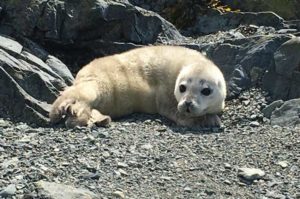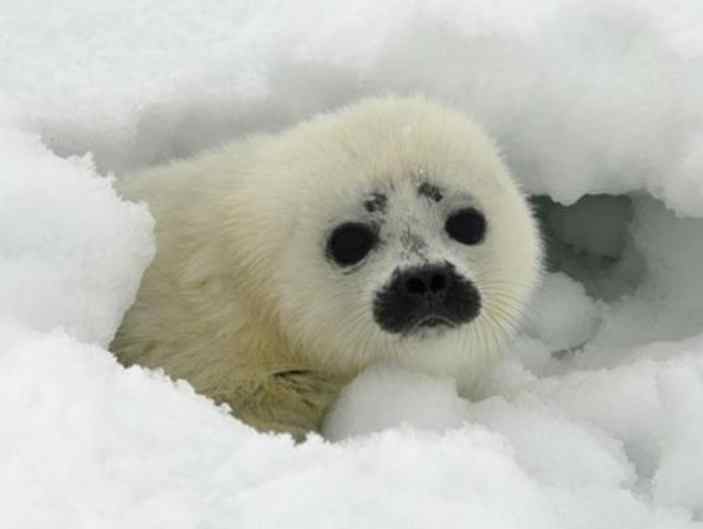These pups—often seen alone onshore—are not abandoned.

Seal Pupping Season Begins!
NOAA’s Alaska Region has already received reports that harbor seal pups have arrived! Pupping season is typically between May and July, but each year a few pups arrive earlier. During the pupping and nursing season, mother harbor seals will leave their pups on shore for extended periods of time while they hunt and forage. These pups are usually not abandoned, but just resting.
Harbor seals are pinnipeds, part of the family of “true seals.” They can be distinguished by their color and absence of ear flaps—they just have a small ear hole. Their color usually follows two basic patterns: light gray sides with dark spots or dark background with light rings. Harbor seals cannot move their hind flippers like sea lions, so they have an awkward gait on land that resembles a caterpillar moving. Adults are around 5 to 6 feet long, weigh between 180 and 285 pounds, and live up to 30 years. They are protected under the Marine Mammal Protection Act.
Mothers give birth to one pup during the spring. At birth, harbor seals weigh around 24 pounds, but they gain weight rapidly during pupping season. Pups will stay with their mothers for 4 to 6 weeks before they are weaned and able to forage on their own. It is essential these seal pups learn to forage on their own, and during this weaning process, they tend to rest on shore without their moms.[content id=”79272″]
What To Do If You Find a Pup
While it may seem that these pups are on their own, their mothers are often close by or can be away for more than 24 hours. Below are some tips to keep in mind when you see a pup on its own:
- Always stay at least 100 yards away from harbor seals and other marine mammals
- Keep dogs on leashes
- Remember that seal moms can stay away for 24 to 48 hours
- Signs of mom being nearby include the pup moving up and down the shoreline and in and out of the water; seals nearby in the water; and tracks around the pup
- Pups tend to haul out of the water in the same location, and may be observed at the same spot over multiple days or weeks
If a seal appears to be injured or in distress, call the NOAA Fisheries Alaska Marine Mammal Stranding Hotline at (877) 925-7773.
- Do not approach the seal or attempt to provide care
- If possible collect photos while keeping your distance—photos help stranding network members assess the seal’s condition

Up to 50 percent of pups do not survive their first year of life, and while we tend to want to help, their best chance of survival is in nature. Many pups are not wary of humans and will not try to escape when approached, meaning that it is extra important to give them space. A healthy fear response is needed for survival.
If pups are disturbed during pupping season, their mothers may abandon them before they are weaned, reducing their likelihood of surviving. It’s essential that we give them space and share the shore with these protected animals. Never approach or pick up a seal pup—it is dangerous to both you and the seal. Observing these adorable pups from a distance is the best way that you can help ensure that they grow up and live a healthy life.





